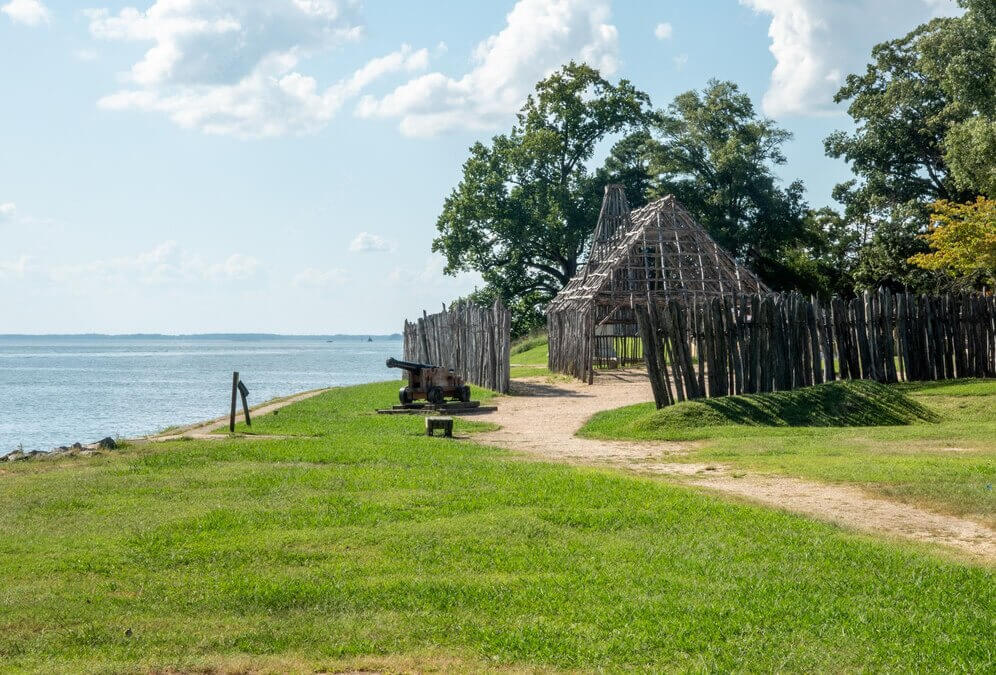Updated May 26, 2023
About Jamestown
The first permanent English establishment in America, Jamestown served as the base for the country’s administration, the opening of diplomatic ties of Native Americans, and the development of barter and commercial crops, which helped the colonies (and ultimately the country) prosper economically.
The Jamestown Settlement was originally situated just to the southeast of what is now referred to as Williamsburg, Virginia, on the northeastern bank of said James River (formerly called the Powhatan River). This town, also known as Colonial Williamsburg, replaced the city of Jamestown as Virginia’s main political center after Jamestown’s failure as a colony.
Jamestown’s History
The establishment of Jamestown, the very first permanent English presence in North America, in Virginia in 1607—13 years before Pilgrims arrived in Massachusetts at Plymouth—sparked a sequence of cultural exchanges that influenced the country and the rest of the world. These ancient Virginians left behind a legacy that still exists today in the shape of their constitution, language, traditions, convictions, and goals.
The first perpetual English settlement in North America was Jamestown. They established it on Virginia’s James River peninsula in May 1607. King James, I was the inspiration for the name. Jamestown started to grow tobacco and set up the first true democracy on the continent (1619).
The colony, whose leader John Smith, and the Native American Pocahontas—whom legend has it rescued Smith’s life—have all been the focus of innumerable books, plays, and movies, many of which are fantastical. It declined after surrounding Williamsburg took over as the seat of government for colonial Virginia in 1699. Due to erosion, the peninsula had become Jamestown Island by the middle of the nineteenth century. The location was added to the Colonial National Historical Park in 1936.
Commerce in Jamestown
Every colony created one system of governance. Jamestown, a constituent body consisting of seven members and a president, and the Pilgrims, who signed the Mayflower Contract, played a pivotal role in making future colonies and the entirety of America possible. Captain John Smith became the president in 1608 after the previous three governors had completed their terms. He established the law requiring people to labor for their bread and established food commerce with the Powhatan Nation.
Even though an explosive accident forced Smith to return to England in 1609, he supported North American colonization and provided historically significant chronicles of Jamestown.
Labor and the Economy
The Virginia Corporation needed money, so settlers tried a variety of minor businesses to generate it, such as glassmaking, woodworking, pitch and tar manufacturing, and potash manufacturing. Colonist John Rolfe introduced tobacco in 1613, transforming it into a lucrative commodity through cultivation. Rolfe eventually wed Pocahontas, and neither of the colonists’ attempts to build lucrative businesses was profitable. Tobacco production needed much land and manpower, accelerating the Virginia colony’s rapid expansion. Settlers invaded the Powhatan Indians’ ancestral territories, and more indentured servants arrived in Virginia.
In Virginia, the very first known Africans came in 1619. During the Portuguese-African War, the Portuguese seized them, and they originated from Ndongo in Angola, Rural Western Africa. Every one of these early Africans was not free, but from the mid-century, the custom of enslavement of Africans for life became more common, taking the place of indentured slaves as the main source of labor. Every one of these early Africans was not free, but from the mid-century, the custom of enslavement of Africans for life became more common, taking the place of indentured slaves as the main source of labor.
Legacy of Jamestown
Jamestown saw the start of the initial representative democracy in British America. Colonists demanding a say in the laws that regulated them called for a general assembly to be convened in 1619. The monarch disbanded the Virginia Company in 1624; thus, Virginia became a British crown colony cause of some events, along with a battle with the Powhatan Indians in 1622 and misbehavior by certain Virginia Business executives in England.
Since Williamsburg became the state’s capital in 1699, Jamestown remained the hub of Virginia’s political and social life. Although Jamestown was no longer a town by the middle of the eighteenth century, its influences can still be seen in the modern United States.



